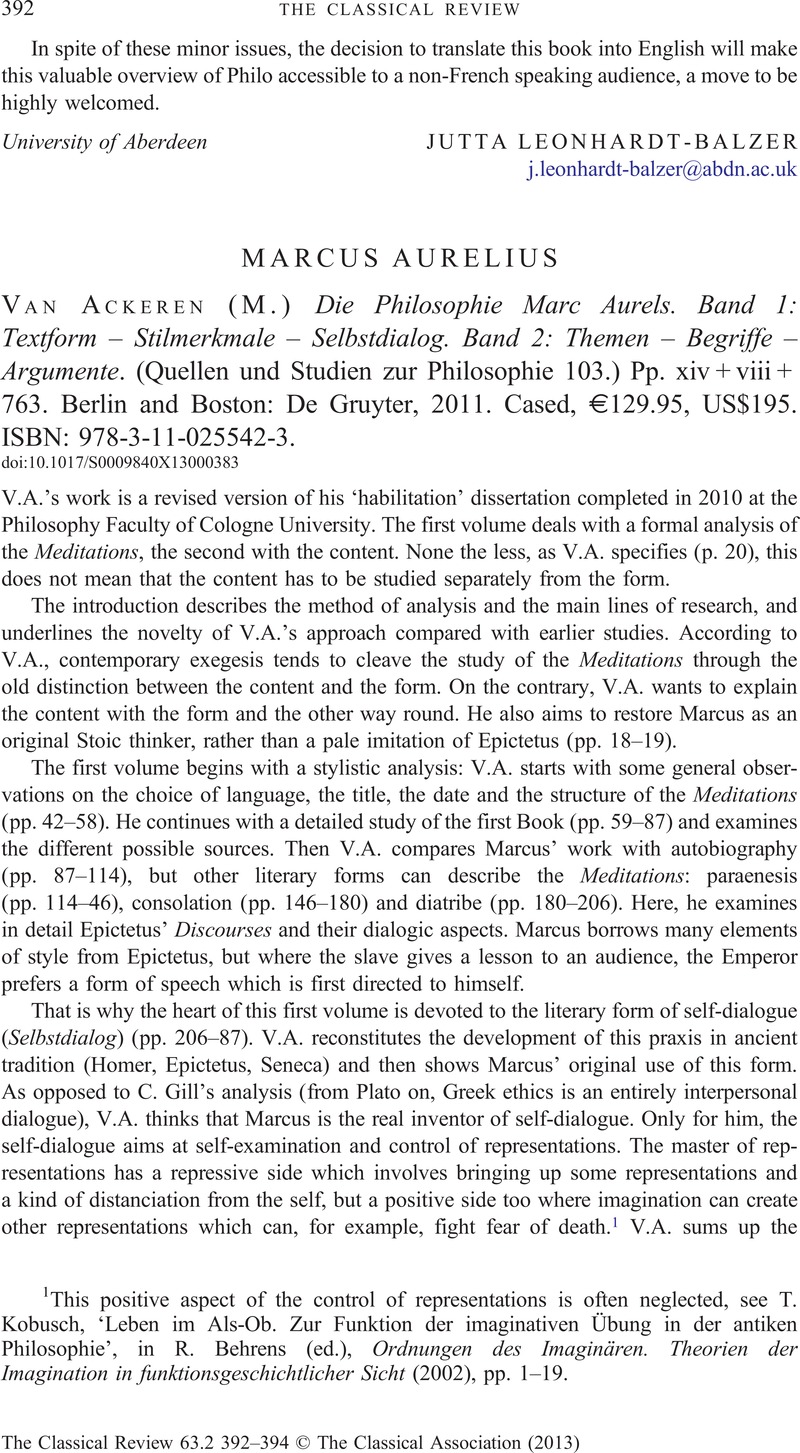No CrossRef data available.
Published online by Cambridge University Press: 12 September 2013

1 This positive aspect of the control of representations is often neglected, see Kobusch, T., ‘Leben im Als-Ob. Zur Funktion der imaginativen Übung in der antiken Philosophie’, in Behrens, R. (ed.), Ordnungen des Imaginären. Theorien der Imagination in funktionsgeschichtlicher Sicht (2002), pp. 1–19Google Scholar.
2 Gill, C., ‘Marcus Aurelius’ Meditations: how Stoic and how Platonic?’, in Bonazzi, M. and Helmig, C. (edd.), Platonic Stoicism–Stoic Platonism (2007), pp. 189–207Google Scholar; Rist, J.M., ‘Are You a Stoic? The Case of Marcus Aurelius’, in Meyer, B.F. and Sanders, E.P. (edd.), Self-Definition in the Graeco-Roman World (1982), pp. 23–45Google Scholar; Reydams-Schils, G., The Roman Stoics (2005)Google Scholar, especially p. 36.
3 V.A. does not mention: Gill, C., ‘Le moi et la thérapie philosophique dans la pensée hellénistique et romaine’, in Ildefonse, F. and Aubry, G. (edd.), Le Moi et l'Intériorité (2008), pp. 83–105Google Scholar; Trapp, M., Philosophy in the Roman Empire – Ethics, Politics and Society (2007)Google Scholar; A.-J. Voelke, L'idée de volonté dans le stoïcisme (1973) and La philosophie comme thérapie de l'âme (1993).